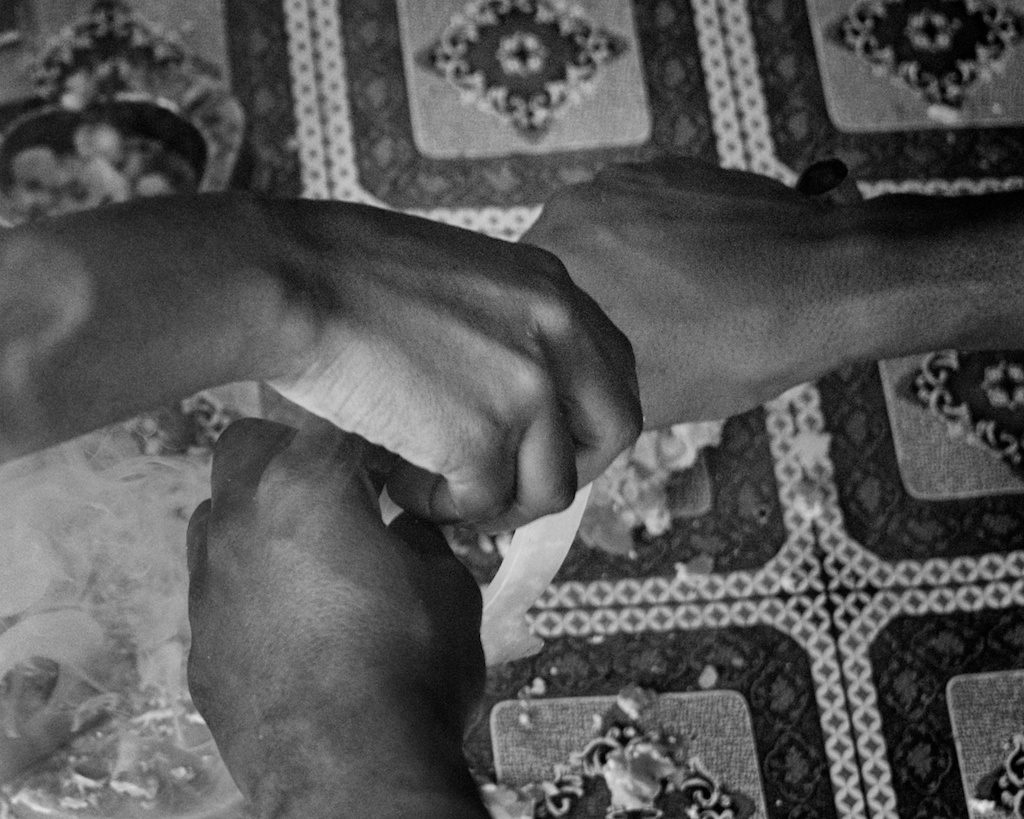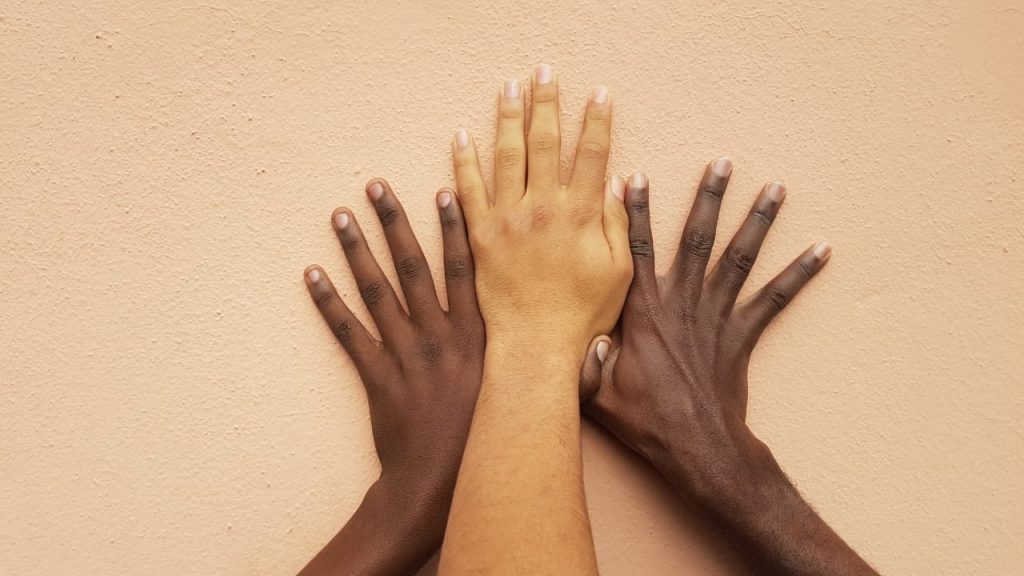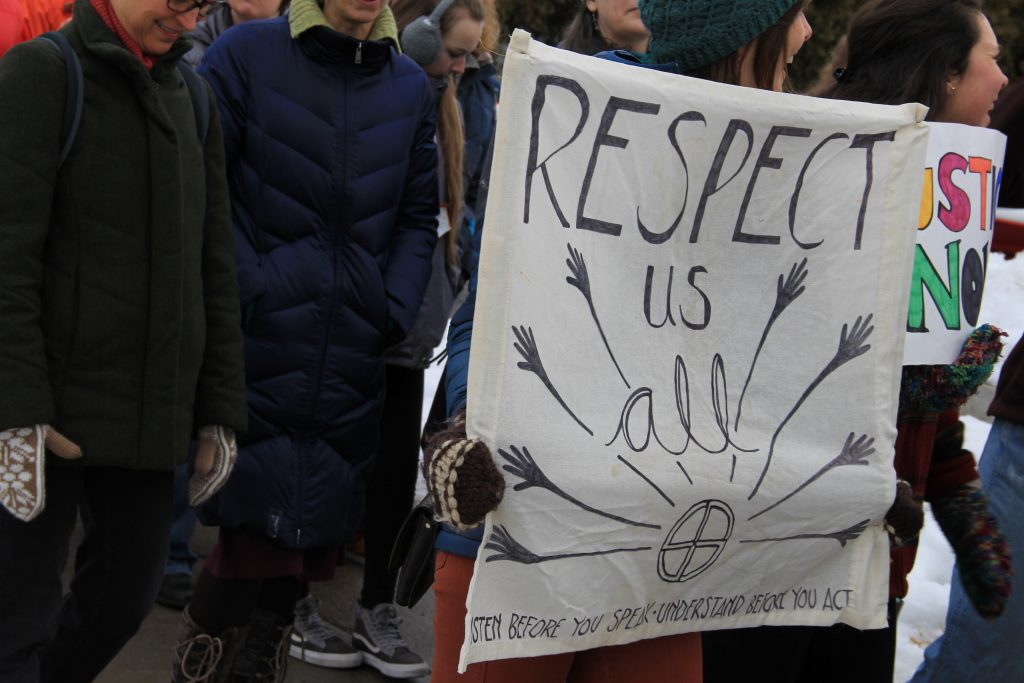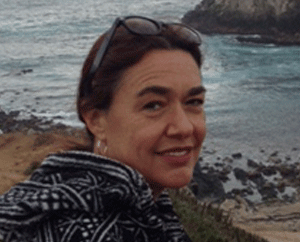This guest post by Silvia Austerlic originally appeared on Medium.
The question is, how big is your ‘we’? ~Beatrice Bruteau
In the midst of the shifts and unfolding world events, it is vital to address how to build a future that includes everyone and how we can build community through diversity. As humanity wakes up to our essential interconnectedness, it is crucial to become aware of what stands in the way of navigating differences and connecting across cultures. It is essential to address the increasing inequalities, upheaval, chaos, and rhetoric of division. Narrow ways of approaching diversity and dealing with conflict challenge us to understand our role in making come true this dream of bridging differences for the sake of cultural diversity, social justice, and world equity.
So where and how do we begin to take care of this Earth Planet, and all the living beings that call it home? What does it mean to “build community through diversity,” and what would that look like? We all want to be part of the solution. We want to do something. However, these are times when good intentions are not enough. In fact, at times doing is not really what is needed; especially when it comes from a place of not really knowing “The Other/s,” nor exactly what they need and want. A doing that comes from fear and reactivity, or from our need to feel good, might help to briefly alleviate our own anxiety. But without being clear about our own motivations nor establishing solid common ground with diverse others, our actions may end up being more of a band-aid that deals with symptoms, while failing to address root causes or meeting real needs.

Service is a word whose meaning may differ depending on the cultural context, one’s life experience, or role in society. In this essay, I refer to service in two main ways. On one hand, service is a personal calling born out of a profound longing to participate and contribute to the greater good, in ways that help alleviate suffering. On the other hand, it is a caring relationship involving two parties in different roles, a “service provider” who offers care, and the one for whom the service or care helps to “meet a need.”
In my view, service is a call to show up and be there for others in a way that provides care, facilitates healing, and restores wholeness. At best, true serving brings respect, honor, and dignity to both sides of the service relationship—to both service providers and those who are served. But how are we to accomplish this? In particular, how do we serve diverse others, when we don’t know who they are, what their values are, what they deeply need and want?
Diversity means understanding that each individual is unique, with differences shaped by race, ethnicity, gender, sexual orientation, socio-economic status, age, physical abilities, religious beliefs, political beliefs, or other ideologies. Embracing diversity requires naming and acknowledging differences; because what is beneficial for some groups and cultures might not be beneficial, or might even be detrimental for others. For instance, the “self-made/do-it-yourself” mantra of Western cultures often goes against the collective identity and common interests that are more important for indigenous cultures. So as people who are interested in serving in a culturally sensitive manner, we name differences not to create more separation nor “us versus them,” but to bring in respect and dignity, and help bridge them.
Walking the Talk of Cultural Humility
I had the deep privilege to serve when working as a Latino Community Liaison for almost a decade providing direct services of hospice care and grief support to Latino children, teens, and adults in Santa Cruz County [California, U.S.A]. Within my professional role, I found that true service did not reside in my job description. As I came in the room—whether it was in a one-on-one or group setting, or in a community presentation—I would often feel a sense of embodying and extending “compassionate healing presence,” and being guided by a higher intelligence that had a plan of its own, a mystery to me. I discovered that my real job was to show up, “hold the space,” and trust the process, so the “client” could re-connect with themselves in deeper and more meaningful ways. I discovered that this was the first step required so that then healing could happen.
As a “service provider” (and female Latino immigrant from Argentina) serving the wider Latino community, I also became aware of cultural dynamics and social justice issues that were often ignored and swept under the rug when addressing access to services. Some of these barriers are white privilege, systemic/institutional racism, and unconscious bias. I understood where the root causes of “health care disparities” lie. They were born not so much from the culture of the patient and family, but from the shoulders of mainstream culture in our country, which sees “diverse communities”—such as immigrants, ethnic communities, low-income sectors—as “have-nots.” From this dominant perspective, poverty, homelessness, lack of access to health care, etc. become “problems to be solved” by experts endowed with power, mastery, and know-how. However, you can’t “solve” root causes from this perspective, since true inclusivity requires people to access their own resources and their own capacity for healing. This “expert as savior” approach robs people of their inherent dignity, silences diverse voices and perspectives, and perpetuates internalized inferiority and superiority.

My own call to serve became increasingly about walking the talk of cultural humility, accepting the invitation to engage in a lifelong commitment to self-evaluation and self-critique, while becoming a student of those I serve. “More than a concept, Cultural Humility is a communal reflection to analyze the root causes of suffering and create a broader, more inclusive view of the world,” writes Doctor Melanie Tervalon (1). Originally developed by her and Doctor Jann Murray-García (1998) to address health disparities and institutional inequities in medicine, the concept of Cultural Humility is now used in public health, social work, education, and non-profit management, as a “daily practice for people to deal with hierarchical relationships, changing organizational policy and building relationships based on trust.” (1)
The starting point for Cultural Humility is not the mastery of lists, nor an examination of the patient’s belief system, but it begins with a careful consideration of assumptions and beliefs embedded in the service provider’s own understandings and goals in the clinical encounter. The most serious barrier is not lack of knowledge of the details, but the service provider’s failure to develop self-awareness and a respectful attitude towards diverse points of view. (2)
I learned that true service is actually more about being than about “doing”; it flows from a quality of presence that arises from our intimate connection with ourselves, that we then extend to others. Only when we meet “the other” where they are, and take the time to listen and learn who they are, what they need, and what they bring… only then we can assess what is truly needed, and whether our service can help. Only treating others with cultural humility, can cultural dignity be fully acknowledged.
Helping and Fixing Are Not Serving
In her article “Helping, Fixing, Serving,” Rachel Naomi Remen, MD, Clinical Professor of Family and Community Medicine at UCSF School of Medicine, establishes an important distinction that has guided me when providing direct services and cultural competence education. More than just different ways of doing, these terms of helping, fixing and serving are “ways of seeing life.” Remen says, “When you help, you see life as weak. When you fix, you see life as broken. When you serve, you see life as whole. From the perspective of service, we are all connected: All suffering is like my suffering and all joy is like my joy. The impulse to serve emerges naturally and inevitably from this way of seeing. (3)
Helping and fixing are not wrong in themselves, and at times they may be useful. But they are not enough, and certainly not conducive to restoring healing and wholeness. In an effort to avoid the discomfort of addressing differences, helping and fixing often come without establishing the intimate connection that is needed for genuine healing to happen. Many times, not only this doesn’t help but may inadvertently hurt. As Dr. Remen suggests, help that establishes a relationship of inequality “may inadvertently take away from people more than we could ever give them; we may diminish their self-esteem, their sense of worth, integrity and wholeness.” (3)
Service requires us to get in touch and exercise our authenticity, vulnerability and courage. In Dr. Remen’s words,
“When I help, I am very aware of my own strength. But we don’t serve with our strength, we serve with ourselves. We draw from all of our experiences. Our limitations serve, our wounds serve, even our darkness can serve. The wholeness in us serves the wholeness in others and the wholeness in life. The wholeness in you is the same as the wholeness in me. Service is a relationship between equals.”
This is an experience of mutuality, where both sides of the relationship are engaged, transformed and enriched. (3)

Cultural Humility 101
These are some recommendations I’d like to offer to those who feel called to serve, whether as a personal calling or as a service provider working for a service organization, so that we proceed in ways that build bridges across differences:
- Explore your own personal-family professional cultural identity, the lenses through which you see and interact with yourself, others and the world.
- Acknowledge your privilege, and the fact that, as a service provider, you might be seen as “the expert” i.e. the one to fix, heal or help. Recognize the power imbalance. I used to tell Latino patients and families, “the doctor may know about medicine, but when it comes to your loved one, you are the expert.” Do what you can to respectfully empower “the other,” by listening deeply and learning about/from/with them.
- Become aware of your unconscious biases, the positive or negative mental attitudes towards a person, thing, or group learned from the society (education, media) in which we live. It is so ingrained in us that they are activated automatically without us realizing it. By becoming more aware of it, we may be able to limit their influence, and expand our connection to life and others who are different from us.
- Be sensitive about the importance of fully seeing “the other” in their integrity. Listening to people’s core concerns fosters respect. Make them partners in the healing alliance so they are part of “what is needed.” This fosters resilience, restores wholeness, and ignites cultural dignity.
- Cultivate a beginner’s mind, what I call “the wisdom of not knowing.” The mindset of not-knowing allows us to explore cultural below-the-surface factors impacting clients’ experiences and client-provider interactions. We cultivate it by engaging from a place of respectful curiosity and non-judgmental attention; putting our individual agendas aside; noticing verbal and non-verbal communication; including different opinions by asking open-ended questions and not assuming. It requires trusting oneself and being comfortable with ambiguity.
True diversity is not just ethnic or gender representation, for example, but about truly expanding our sense of connection, inclusion, and sense of belonging across differences, with all “others.” It starts with getting to know ourselves and understanding the cultural lenses through which we see the world (beliefs, values, biases, privileges). It takes meeting people “where they are,” acknowledging and bringing respect to cultural differences, making an effort to understand their life experience and cultural perspectives, while making room for their participation and contribution on their own terms. From an intercultural perspective, the relationship of service is a dance between cultural humility and cultural dignity. In the context of culturally competent and sensitive services, this is the way that enriches the lives of both service providers and the clients, families, and communities for the sake of cultural wholeness.
References
(1) Melanie Tervalon Consulting, www.MelanieTervalon.com
(2) Cultural humility versus cultural competence: A critical distinction in Defining Physician Training Outcomes in Multicultural Education. Melanie Tervalon; Jann Murray-Garcia: Journal of Health Care for the Poor and Underserved; May 1998; 9, 2; ProQuest Medical Library. (pp. 117–123)
(3) Helping, Fixing, Serving, Rachel Naomi Remen https://www.uc.edu/content/dam/uc/honors/docs/communityengagement/HelpingFixingServing.pdf
About the Author

Silvia Austerlic is an intercultural educator and facilitator, founder of Senti-Pensante Connections, an international consultancy based in Santa Cruz, California that specializes in critical interculturality, leadership development, and healing justice. For more information please contact her at silvia [at] senti-pensante [dot] com or visit www.senti-pensante.com.
***
Related Posts
Actually, it was my capacity that needed to be built
The cost of diversity without inclusion
If ever there was a time… (Part 2)
Be the space: On hosting a conversation on decolonising development


Thank you for sharing this. I found the concept of cultural humility to be very interesting. I have worked in various contexts where the background of the people “serving” was very different from those who were being served. The mere naming it as “serving” changes the dynamic.
I wonder if there are training for NGO workers that could provide workers with an introduction to cultural humility? I have seen situations in which assumptions made by those who are providing the services have emotionally hurt those who are being provided for. A cultural humility training could have prevented such a sad outcome.
Also, the article made me wonder how we could provide young people with opportunities to learn how to “serve” in school. Could we better prepare young people to show up and be there for others? Maybe those are skills that can be honed in school?
Thank you for providing this thoughtful guide. I particularly appreciate the concept of becoming the student of those we serve. In practice, this will help us build more self-awareness of our privilege and biases. I think that academic institutions serve as an important platform through which a culture of humility should be taught and nurtured. Higher education draws many young minds eager to do good in the world, but if curricula is overly focused on theory, I fear that it can foster the “expert as savior” complex. I’d advocate that Cultural Humility 101 should be a required class for anyone interested in serving others in some capacity.
You’re so cool! I don’t believe I’ve rad through something like that before.
So good to discover somewone with some unique thoughts on this subject.
Really.. many thanks for starting this up.
This web site is something that is needed on the
internet, someone with a little originality!
Also visit mmy web-site; religion divides (hermandaddesantiago.org)